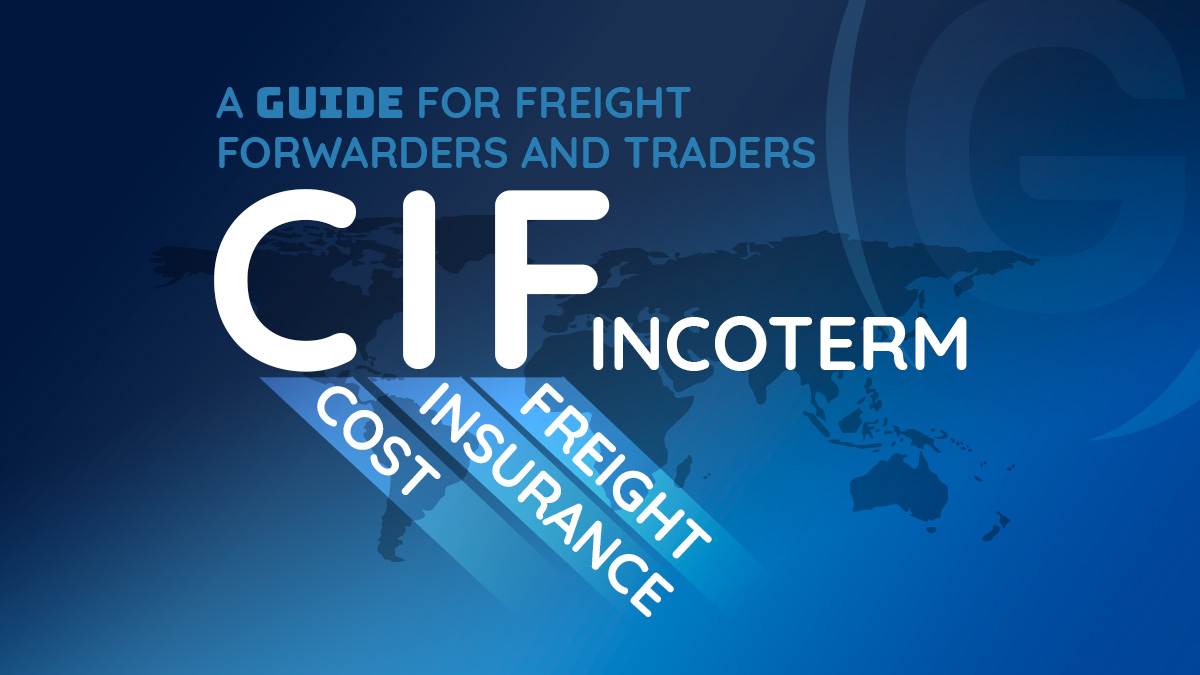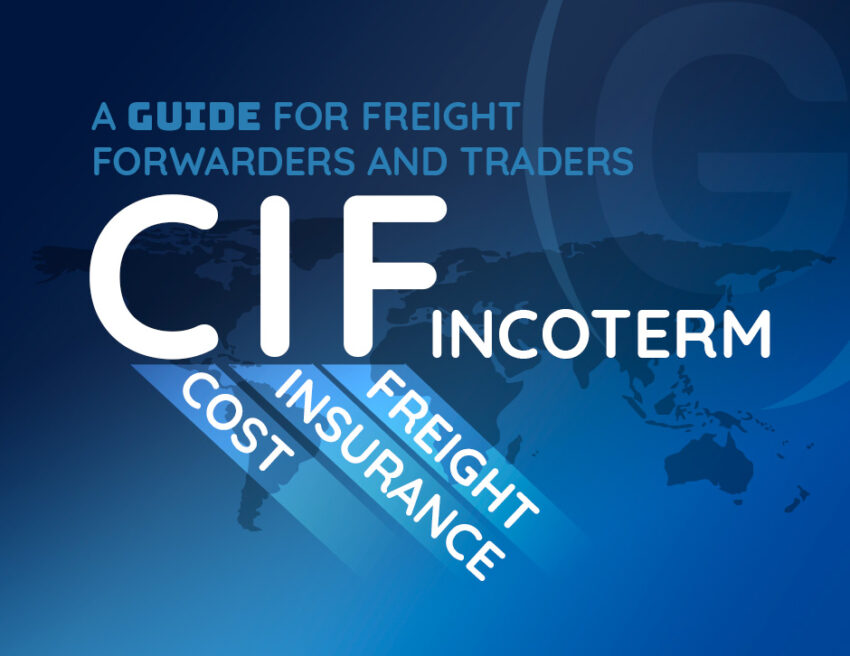In the world of international trade, choosing the right Incoterm is crucial for smooth and cost-effective logistics. One of the most widely used terms in maritime shipping is CIF (Cost, Insurance, and Freight). CIF simplifies transactions by placing key responsibilities on the seller while still requiring buyers to understand crucial aspects of risk management.
Whether you’re a freight forwarder, importer, or exporter, mastering CIF can help you navigate global trade with confidence. In this guide to CIF Incoterm, we’ll break down what CIF entails, its advantages and drawbacks, and when you should use it to optimize your logistics strategy.

A Guide to CIF Incoterm: What is Cost and Insurance and Freight and How Does It Work?
CIF is an Incoterm defined by the International Chamber of Commerce (ICC) and applies exclusively to sea and inland waterway transport. Under CIF terms, the seller is responsible for the costs, insurance, and freight needed to transport goods to the designated port of destination. However, the risk transfers from the seller to the buyer once the goods are loaded onto the shipping vessel at the port of origin.
Breaking Down CIF: The Three Key Components
- Cost – The seller covers all costs related to manufacturing, packaging, export clearance, and terminal handling at the port of origin until the goods are loaded onto the vessel.
- Insurance – The seller must obtain a minimum level of insurance coverage for the shipment, as stipulated by the ICC. However, buyers may negotiate for additional coverage if needed.
- Freight – The seller arranges and pays for transportation to the agreed-upon destination port, but responsibility for any damage or loss during transit shifts to the buyer once the goods are on board the ship.
Benefits of Using CIF Incoterms in International Transactions
CIF is widely used for its convenience and cost predictability. Here’s why many traders and freight forwarders prefer it:
1. Simplifies Logistics for Buyers
Buyers benefit from CIF because the seller takes care of key logistics responsibilities, including shipping and insurance. This is particularly helpful for businesses with limited expertise in global freight operations.
2. Transparent Pricing
Since the seller includes freight and insurance costs in the quoted price, buyers can better forecast expenses and avoid unexpected charges.
3. Insurance Coverage Ensured
CIF mandates that the seller provides at least minimal insurance, giving buyers a layer of protection. However, it’s advisable for buyers to confirm that the coverage aligns with their needs.
Challenges and Limitations of CIF
Despite its advantages, CIF has some limitations that traders should consider before choosing it as their preferred Incoterm.
1. Limited Control Over Risk Management
The seller arranges the insurance, meaning the buyer has little say in the policy terms. The standard coverage may be insufficient, requiring additional negotiations or separate insurance arrangements.
2. Risk Transfers Early in the Process
While the seller covers freight and insurance, the buyer assumes risk the moment the goods are loaded onto the vessel. Any damages occurring after this point are the buyer’s responsibility, which can be problematic in cases of long transit times or volatile shipping conditions.
3. Seller-Selected Freight Carriers
Since the seller chooses the freight provider, the buyer has no control over the carrier’s reliability, transit times, or service quality. This can lead to inefficiencies, delays, or higher costs if the seller does not prioritize the best shipping options.
When Should You Use CIF?
CIF is best suited for specific scenarios where it provides the most value:
- Bulk Shipments – Industries such as agriculture, mining, and energy often rely on CIF for transporting large volumes of commodities like grain, coal, or crude oil.
- Maritime Shipments – Since CIF applies only to sea and inland waterway transport, it’s ideal for goods moving through major shipping ports.
- Buyers Seeking Simplicity – Businesses with limited logistics experience may prefer CIF because it places much of the transport burden on the seller.
However, if you need more control over freight and insurance choices, alternative Incoterms like FOB (Free on Board) or CPT (Carriage Paid To) may be more suitable.
Expert Tips for Using CIF Effectively
If you decide to use CIF in your transactions, follow these best practices to ensure a smooth shipping process:
1. Negotiate Insurance Terms
Don’t assume that the seller’s insurance provides comprehensive protection. Always verify coverage and request a more extensive policy if necessary.
2. Assess Destination Port Risks
Delays, high port fees, or logistical bottlenecks at the destination port can impact the efficiency of CIF transactions. Research and plan accordingly to mitigate these risks.
3. Compare Costs with Alternative Arrangements
While CIF offers convenience, it’s wise to compare the seller’s quoted shipping and insurance costs with independent providers to ensure you’re getting the best deal.
Conclusion: Is CIF the Right Choice for Your Business?
CIF (Cost, Insurance, and Freight) is a popular Incoterm that simplifies logistics for buyers while offering predictable costs and insured shipments. However, the risk transfer point and limited buyer control over shipping arrangements mean it isn’t always the best option.
By understanding CIF’s advantages, limitations, and practical applications, you can make informed decisions that align with your trade strategy. Whether you’re shipping bulk goods or looking for an easier way to manage maritime logistics, CIF can be a powerful tool—when used wisely.
Next time you’re negotiating an international shipment, consider whether CIF aligns with your risk tolerance and logistical needs. With the right approach, you can harness the benefits of CIF while minimizing its drawbacks for a seamless global trade experience.


